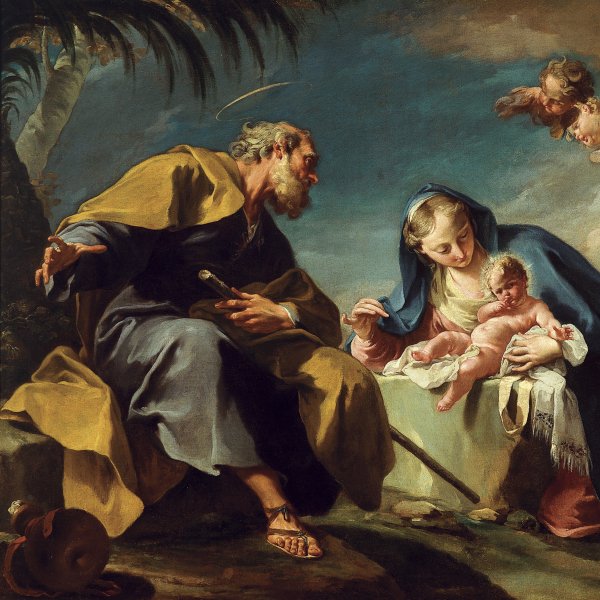Giovanni Battista Pittoni
Venice, 1687-1767
Pittoni, who was from a family of artists, trained with his uncle Francesco Pittoni. In addition to his skills as a painter he was also an exceptional draughtsman, as is evident in his lively preparatory studies. The Gallerie del’Accademia and the Fondazione Cini in Venice both have a good collection of drawings of heads, animals and other figures by Pittoni. His early works reveal the influence of contemporary painters such as Balestra and Sebastiano Ricci, while his style is particularly close to that of Nicola Grassi and Bencovich. Pittoni’s work evolved as he absorbed the influence of Venetian art, and he favoured a French Rococo idiom characterised by a sophisticated and elegant use of colour. This interest in French art may be explained by a possible trip to Paris as a young man in 1720 in the company of his uncle, Rosalba Carriera, Giovanni Antonio Pelligrini and Anton Maria Zanetti. It has also been suggested that this French element may have been derived from the work of artists such as Ricci and Pellegrini. The altarpiece for the church of Santa Corona in Vicenza with The Virgin and Child with Saints and Pius V is Rococo in style but, as Boccazzi noted (1979), it also reveals Pittoni’s interest in pursuing new directions in his work, as indicated by his increasingly dark palette. Among his late works are those painted for the churches of San Cassiano and San Giacomo dell’Orio in Venice.
While Pittoni always lived in Venice his work became widely known throughout Italy and beyond, including Bohemia, Cologne, Dresden, Spain and Poland. He undertook work for the Schönbrunn Palace in Vienna, the royal palace of San Ildefonso, La Granja, Spain, and for the Mariacki church in Cracow. Pittoni’s style became extremely influential in Bohemia after his pupil, the Bohemian painter Anton Kern, returned there and became the principal medium for the dissemination of his style in central Europe. Pittoni was one of the founding members of the Venice Academy and followed Giambattista Tiepolo as its president in 1758.
While Pittoni always lived in Venice his work became widely known throughout Italy and beyond, including Bohemia, Cologne, Dresden, Spain and Poland. He undertook work for the Schönbrunn Palace in Vienna, the royal palace of San Ildefonso, La Granja, Spain, and for the Mariacki church in Cracow. Pittoni’s style became extremely influential in Bohemia after his pupil, the Bohemian painter Anton Kern, returned there and became the principal medium for the dissemination of his style in central Europe. Pittoni was one of the founding members of the Venice Academy and followed Giambattista Tiepolo as its president in 1758.





